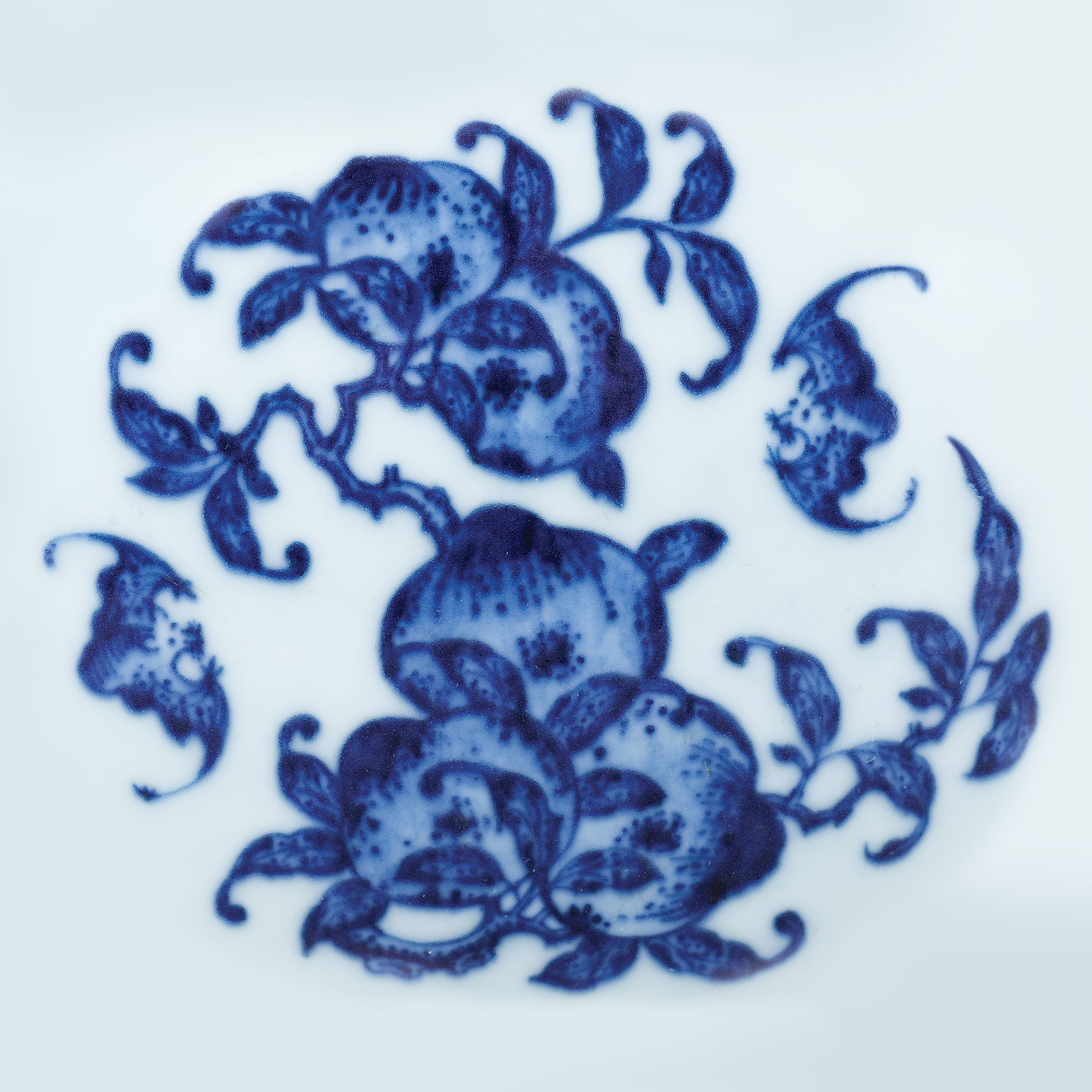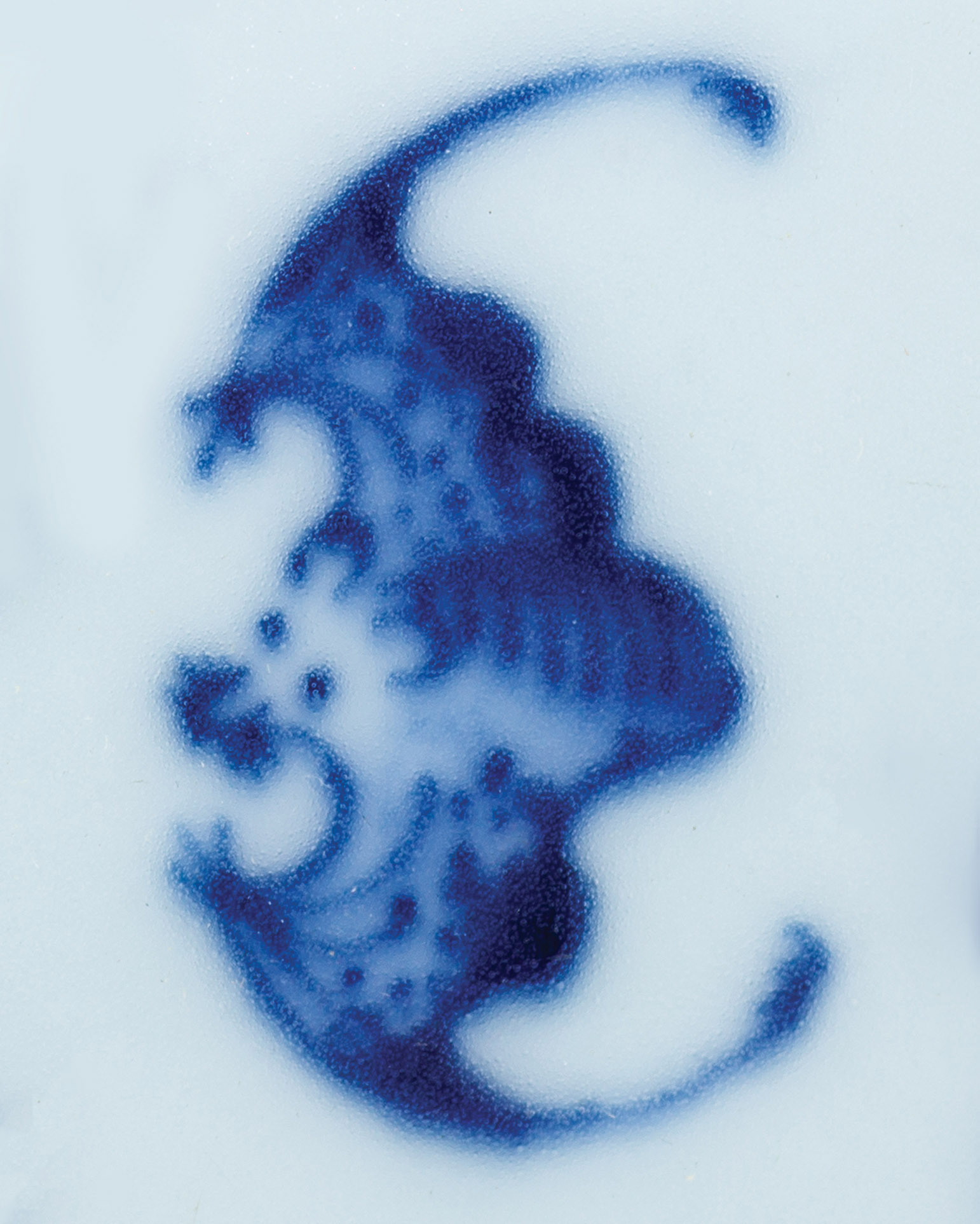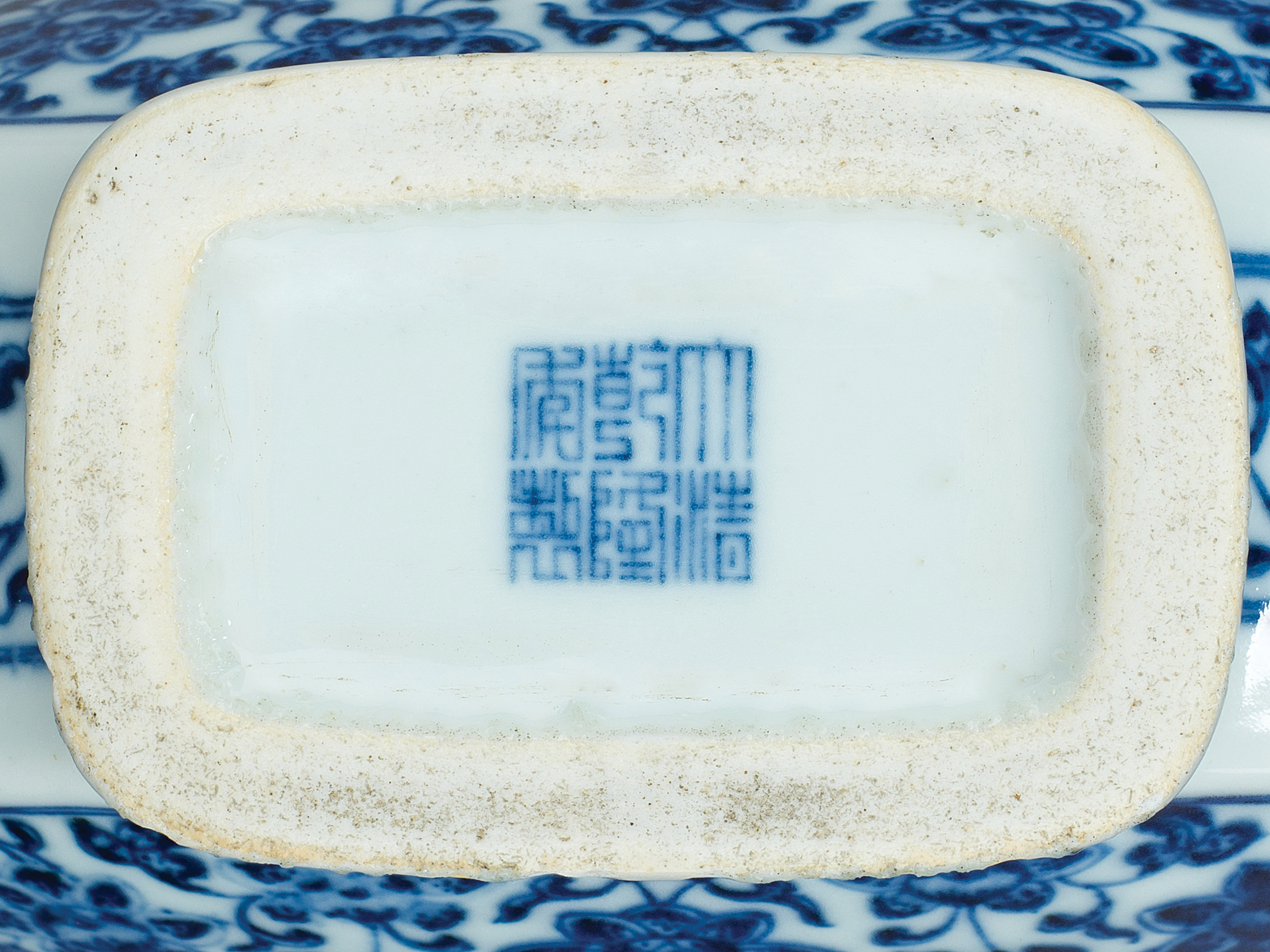30 – SMBM5
Description
Pair of Chinese imperial porcelain blue and white moonflasks, bian hu, each with ruyi-head terminal handles, flared rim and everted foot, painted on each side with peach-shaped relief panels of five large fruiting peaches on a singular leafy branch between a pair of bats in flight encircled by scrolling branches of lotus and camellia within underglaze blue double lines, the flat sides with a continuous scrolling branch of fruiting lingzhi between pairs of double lines, the neck painted with a band of lotus beneath ruyi-heads and a floral band with scrolling leafy branches at the rim, the foot with a continuous band of leaves and branches.
Each base with a six-character sealmark of Qianlong in underglaze blue and of the period, 1736-1795.
9 ½ inches, 24.2 cm and 9 9/16 inches, 24.3 cm high.
Provenance & Additional Information
- Purchased by Richard Marchant 28th July 1966.
- One is included by R. P. Marchant in a lecture given to the Oriental Ceramic Society of Hong Kong, 23rd November 1976 titled Some Interesting Pieces of Marked Ch’ing Porcelain, Bulletin of the Oriental Ceramic Society of Hong Kong, no. 3, 1977-1978, no. 40-43, pp. 53/4, where the author notes “the ruyi handle is in relief and very, very precise. Note the dotted technique on a blue wash ground. There is a ridge on either side of the centrally raised panels. In the Ming dynasty this dot effect was the result of an inability to control the blue, resulting in its clotting together to form dots, but on some Ch’ing pieces, the dot technique has been used for no other purpose than to reproduce this error effect in what might be called a negative manner, whereas on this piece one can see quite clearly that the dot technique is used in the design itself and on the handles as a positive Here we can see how although Ming prototypes were in the minds of the manufacturers of these pieces, they nonetheless innovated artistically”.
- Qianlong mark and period moonflasks of this type are held in important museums and collections worldwide; one is in the National Palace Museum, Taipei, accession 003549N000000000; another in the Nanjing Museum is illustrated by Xu Huping in The Official Kiln Porcelain of the Chinese Qing Dynasty, Shanghai, 2003, no. 220; another is illustrated by Torataro Yoneyama in Qing Dynasty Porcelain from the Seikado Bunko Art Museum, Tokyo, 2006, no. 49, p. 58; another is illustrated by Yutaka Mino and James Robinson in Beauty and Tranquility: The Eli Lilly Collection of Chinese Art, Indianapolis, 1983, pl. 116.
- A similar example from a French collection in Burgundy acquired before 1890 was included by Marchant in their exhibition of Chinese Ceramics Tang to Qing, 2014, no. 45, pp. 90/1.
- Bats, fu, and peaches, shoutao, together form the rebus fushou shuangquan, “may you possess both blessings and longevity”, as bats are a symbol of blessings and peaches When combined with lingzhi, they form the rebus fuzhi xinling, “may your heart be filled with intelligence when blessings arrive”, because the fungus, lingzhi, is a pun on “intelligence”, ling. Each panel is illustrated with five peaches, as opposed to five bats. This could also be read as wu fu tao, a reference to five blessings, a Daoist concept of long life, wealth, health, virtue and a
natural passing without suffering.
Condition
Overall in excellent condition, without any chips,crcaks,or restoration.













